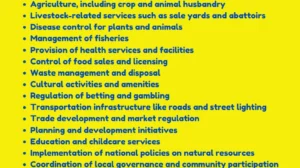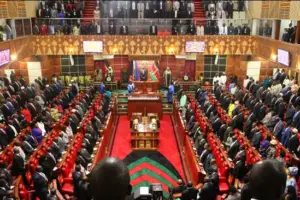The count of recognized countries in the world is a topic of intrigue for many, and it’s not as straightforward as one might think.
At first glance, it seems like a simple number, but a closer look reveals a dynamic and evolving concept.
With approximately 195 recognized countries worldwide, it is essential to understand the complexities and factors that shape this figure.
Recognizing the Changes
The number of countries in the world is not static, and it has seen significant changes over the years.
This is partly due to political and historical factors, including secession movements, decolonization, and the redrawing of borders.
A notable example is the disintegration of the Soviet Union in 1991, leading to the emergence of multiple independent states.
Similar occurrences have transpired across history, continually altering the global landscape.
One article titled “The Dynamics of Country Formation” provides a historical perspective on the emergence of new countries.
It illustrates how colonial legacies, nationalist movements, and shifting political dynamics have contributed to the formation of new states.
Global Politics and Recognition
International recognition is a critical aspect of determining the number of countries in the world.
The United Nations, an organization with 193 member states, serves as a platform for internationally recognized countries to engage in diplomacy and cooperation.
However, not all recognized countries are UN members, such as Taiwan, which faces political complexities in securing international recognition.
An article titled “UN Membership and International Recognition” delves into the intricacies of UN membership and the role it plays in recognizing nations on the global stage.
It highlights the political considerations and negotiations that are often involved in this process.
Secession Movements and New Nations
Secession movements are a recurring theme in the evolution of country counts.
The Balkans region witnessed several countries emerging after the dissolution of Yugoslavia in the 1990s, including Croatia, Bosnia and Herzegovina, and others.
Similarly, the Baltic States of Estonia, Latvia, and Lithuania regained independence from the Soviet Union during the same era.
In “The Impact of Secession Movements on Global Politics,” the dynamics of secession movements and their consequences for international relations are explored.
The article discusses how these movements can shape the formation of new nations and have implications for global stability.
Challenges and Opportunities
The ever-changing number of countries in the world brings both challenges and opportunities.
On the one hand, it can lead to conflicts, as seen in disputes over territory and sovereignty.
On the other hand, it creates opportunities for cross-cultural exchange, economic growth, and international cooperation.
“Challenges and Opportunities in a World of Evolving Nations” addresses the complexities associated with an evolving world map.
It discusses how nations can work together to overcome challenges such as climate change, terrorism, and public health crises while seizing opportunities for progress and collaboration.
The number of countries in the world is a dynamic and ever-changing concept shaped by political, historical, and diplomatic factors. The recognition of nations on the global stage plays a pivotal role in this process. It is essential to acknowledge that this number is not fixed but subject to continuous evolution, reflecting the ongoing story of our interconnected world.
References:
- The Dynamics of Country Formation
- UN Membership and International Recognition
- The Impact of Secession Movements on Global Politics
- Challenges and Opportunities in a World of Evolving Nations
The world is a vast and diverse place, comprising approximately 195 recognized countries. These countries make up the complex and ever-changing global landscape.
While it might appear as a straightforward number, the actual count of countries is influenced by a variety of factors, including historical events, international recognition, and political complexities.
Notably, out of these 195 countries, 193 are member states of the United Nations, and two are recognized as non-member observer states: the Holy See and the State of Palestine.
These distinctions highlight the role of international organizations and diplomacy in recognizing nations on the global stage.
However, the count of recognized countries does not encompass every political entity or territory in the world.
Not included in this list are areas like Taiwan, which the United Nations recognizes as part of the People’s Republic of China, as well as entities like the Cook Islands and Niue, which maintain a free association with New Zealand and are not full UN member states.
Furthermore, there are dependent territories, autonomous regions, and areas of special sovereignty that are not counted as fully independent countries.
These regions may have varying degrees of self-governance or may be considered non-self-governing by the United Nations.
The distribution of these countries is not uniform across the globe. They are divided into six major continents:
- Africa: 54 countries
- Asia: 48 countries
- Europe: 44 countries
- Latin America and the Caribbean: 33 countries
- Oceania: 14 countries
- Northern America: 2 countries
LIST OF COUNTRIES
1. Afghanistan is a landlocked country in South Asia. 2. Albania is a Balkan nation known for its stunning coastline.
3. Algeria is the largest country in Africa by land area.
4. Andorra, a tiny European principality, lies in the Pyrenees mountains.
5. Angola is a Southern African nation with a rich cultural heritage.
6. Antigua and Barbuda is a Caribbean nation comprising two major islands.
7. Argentina is famous for its diverse landscapes, including the Andes mountains.
8. Armenia is a country in the South Caucasus region with a rich history.
9. Australia is both a country and a continent known for its unique wildlife.
10. Austria, located in Central Europe, is renowned for its classical music heritage.
11. Azerbaijan is a transcontinental nation straddling Eastern Europe and Western Asia.
12. The Bahamas is an archipelago in the Atlantic Ocean, popular for its beaches.
13. Bahrain, a small island country, is known for its financial sector.
14. Bangladesh is a densely populated country in South Asia.
15. Barbados is a Caribbean island nation known for its vibrant culture.
16. Belarus, located in Eastern Europe, has a diverse landscape.
17. Belgium is famous for its chocolates, waffles, and medieval towns.
18. Belize is a Central American country with a lush rainforest.
19. Benin is a West African nation with a rich history of kingdoms.
20. Bhutan, nestled in the Himalayas, is known for its stunning scenery.
21. Bolivia is a landlocked country in South America with diverse geography.
22. Bosnia and Herzegovina is a Balkan nation with a complex history.
23. Botswana is known for its wildlife-rich national parks in Southern Africa.
24. Brazil, the largest country in South America, is famous for the Amazon Rainforest.
25. Brunei, located on the island of Borneo, is known for its oil wealth.
26. Bulgaria, in Southeastern Europe, has a rich cultural heritage.
27. Burkina Faso is a West African country known for its traditional music.
28. Burundi is a landlocked nation in East Africa with a turbulent history.
29. Cabo Verde is an island country off the coast of West Africa.
30. Cambodia is home to the famous Angkor Wat temple complex.
31. Cameroon is known for its diverse landscapes and wildlife.
32. Canada, the second-largest country globally, boasts stunning natural beauty.
33. The Central African Republic is a landlocked nation in Central Africa.
34. Chad, also landlocked, is located in North-Central Africa.
35. Chile stretches along the western edge of South America.
36. China, the most populous country, has a rich cultural heritage.
37. Colombia is known for its biodiversity and coffee production.
38. Comoros is a volcanic archipelago in the Indian Ocean.
39. Congo, officially the Democratic Republic of the Congo, is in Central Africa.
40. Costa Rica is famous for its lush rainforests and biodiversity.
41. Côte d’Ivoire, also known as Ivory Coast, is in West Africa.
42. Croatia boasts a stunning Adriatic coastline and historic cities.
43. Cuba, an island nation, is known for its revolutionary history.
44. Cyprus is an island country in the eastern Mediterranean.
45. The Czech Republic (Czechia) is located in Central Europe.
46. The Democratic Republic of the Congo is the second-largest country in Africa.
47. Denmark is a Scandinavian country known for its design and happiness.
48. Djibouti, located in the Horn of Africa, has strategic importance.
49. Dominica is a Caribbean island nation known for its lush rainforests.
50. The Dominican Republic shares the island of Hispaniola with Haiti.
51. East Timor, also known as Timor-Leste, is a Southeast Asian nation.
52. Ecuador is known for its diverse ecosystems, from the Amazon to the Galápagos.
53. Egypt, with its ancient history, is located in North Africa.
54. El Salvador is the smallest Central American country.
55. Equatorial Guinea is located on the west coast of Central Africa.
56. Eritrea is a nation on the Horn of Africa with a diverse population.
57. Estonia is a Baltic country in Northern Europe.
58. Eswatini, formerly known as Swaziland, is a Southern African kingdom.
59. Ethiopia is known for its diverse cultures and historical sites.
60. Fiji, an island nation in the Pacific, is famous for its beaches.
61. Finland is located in Northern Europe and is known for its lakes.
62. France, in Western Europe, is renowned for its cuisine and culture.
63. Gabon is a Central African nation known for its rainforests.
64. The Gambia is a small West African country with a long river.
65. Georgia is located at the intersection of Eastern Europe and Western Asia.
66. Germany, in Central Europe, is a major economic powerhouse.
67. Ghana

















































